Polygon vs Solana — Which One Is Better? MATIC and SOL Comparison
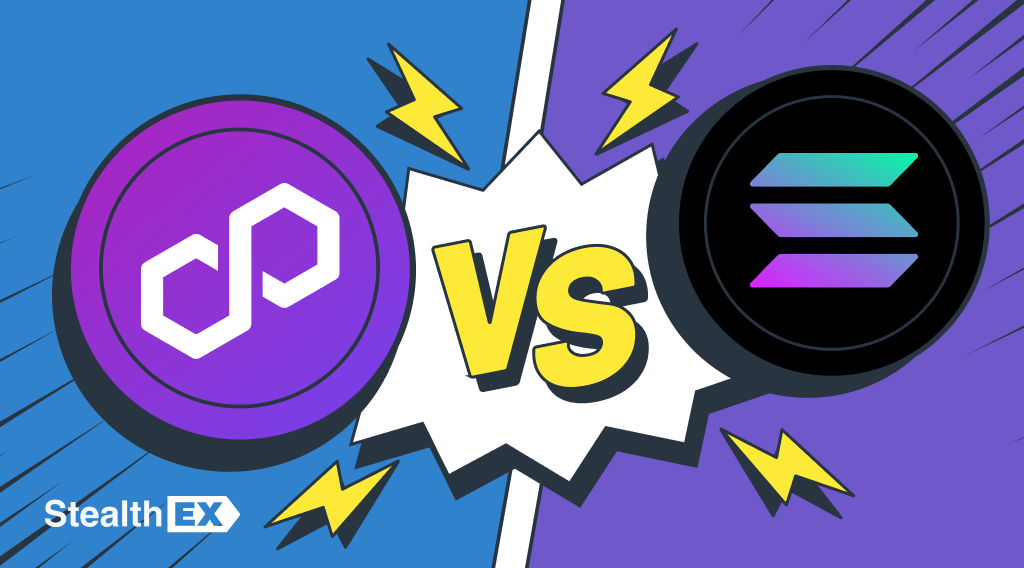
Comparing Polygon and Solana is key for savvy crypto investors. Our article delves into the nuances of MATIC and SOL, highlighting differences in technology, scalability, and market dynamics. Gain essential insights to determine if Polygon (MATIC) or Solana (SOL) aligns better with your investment strategy. Explore our in-depth analysis of Polygon vs Solana.

Article contents
What Is Polygon?
Polygon, previously known as Matic Network, is a multifaceted blockchain platform. It’s designed to address some of Bitcoin (BTC) and Ethereum’s major limitations: high fees and slow transaction speeds.
At its essence, Polygon is an Ethereum-compatible blockchain scalability platform. It extends Ethereum, adding the power of multi-chain systems. This means it can process transactions faster and more cheaply than Ethereum alone.
Polygon’s standout feature is its framework for building connected blockchain networks. This framework supports building and connecting Ethereum-compatible blockchain networks. It’s like a bridge, linking various blockchains to improve communication and flow.
The network uses a modified proof-of-stake consensus mechanism. This mechanism enhances security while ensuring faster and cheaper transactions. It’s eco-friendlier compared to the energy-intensive proof-of-work system.
One of Polygon’s goals is to make blockchain technology accessible to all. It simplifies interactions between users and the decentralized world. Whether it’s for decentralized apps (dApps) or other blockchain-based services, Polygon aims to make these more usable and accessible.
What Is Solana?
Solana is a high-performance blockchain platform known for its incredible speed and efficiency. It’s designed to support decentralized applications (dApps) and cryptocurrencies, much like Ethereum, but with some distinct differences.
The standout feature of Solana is its speed. It can process thousands of transactions per second (TPS), far surpassing older blockchains like Bitcoin or Ethereum. This speed is crucial for applications that need real-time data processing.
What powers Solana’s speed? A unique consensus mechanism called Proof of History (PoH). Unlike traditional blockchains, PoH creates a historical record that proves an event occurred at a specific moment in time. This significantly speeds up the validation process.
Solana is not just fast; it’s also cost-effective. Its efficiency means lower transaction fees, a major advantage for both users and developers. This makes it an attractive platform for a wide range of applications, from gaming to finance.
Polygon vs Solana – Key Differences Between MATIC and SOL
When comparing Polygon and Solana it’s essential to focus on their unique features. Both networks have gained significant attention, but they differ in several key aspects.
Firstly, Polygon is a layer-2 scaling solution for Ethereum. It enhances the Ethereum blockchain by increasing its scalability and reducing transaction fees. This makes Polygon a go-to choice for developers seeking to build decentralized applications (dApps) with high efficiency and low cost.
On the other hand, Solana stands out for its incredible transaction speed and scalability. Unlike Polygon, Solana is a layer-1 blockchain, often praised for its high throughput and low transaction costs. It achieves this through its unique consensus mechanism, which combines Proof of History (PoH) with Proof of Stake (PoS), enabling faster transaction processing.
Another critical difference lies in their ecosystems. Polygon supports a wide array of Ethereum-based applications and tokens, thanks to its compatibility with the Ethereum network. This integration allows for seamless interactions between Ethereum and Polygon-based applications.
In contrast, Solana has developed its own robust ecosystem, independent of Ethereum. It hosts a variety of unique projects and tokens, attracting users and developers interested in a fast, standalone blockchain environment.
In summary, while both Polygon and Solana offer scalability and efficiency, they cater to different needs. Polygon is ideal for Ethereum-based projects seeking scalability, whereas Solana appeals to those looking for a high-speed, independent blockchain platform. Each has its strengths, making the choice between MATIC (Polygon) and SOL (Solana) dependent on the specific requirements of users and developers.
Choose StealthEX for Exchange and Buy Crypto
- User-Friendly — Simple and minimalistic interface for everyone.
- Fast and Private — Instant non-custodial cryptocurrency exchanges.
- Buy crypto with Credit Card.
- 1400+ coins and tokens are available for limitless, quick and easy exchanges.
- NO-KYC crypto exchanges — Buy cryptocurrency up to $700 without KYC!
- StealthEX crypto exchange app — Process crypto swaps at the best rates wherever you are.
- 24/7 Customer Support.
Earn from Each Exchange by Joining StealthEX Affiliate Program.
Become a partner right now and use affiliate tools:
- Public API — Earn from your wallet, aggregator, or exchange terminal.
- Referral Links — Recommend StealthEX to your audience.
- Exchange Widget — Built crypto exchange widget on any page of your website.
- Button — A perfect choice for traffic monetization.
- Banner — Track conversion and stats right in the personal cabinet.
Polygon or Solana – Key Similarities Between MATIC and SOL
But it’s not just their differences that stand out – these two blockchain giants share several key similarities as well.
Firstly, both Polygon and Solana aim to solve the scalability issues faced by earlier blockchains like Bitcoin and Ethereum. They focus on providing faster transaction speeds and lower fees, a significant attraction for both users and developers. This shared goal makes them strong contenders in the race to improve blockchain efficiency.
Another similarity is their support for smart contracts. Both Polygon and Solana offer robust platforms for deploying these contracts, which are vital for creating decentralized applications (dApps). This makes them popular choices for developers looking to build innovative blockchain solutions.
Furthermore, both networks have strong communities and ecosystems. The growth of their ecosystems is powered by numerous projects, ranging from decentralized finance (DeFi) to non-fungible tokens (NFTs). These vibrant communities contribute to the continuous development and adoption of both Polygon and Solana.
Another aspect they share is their commitment to environmental sustainability. Both networks consume significantly less energy compared to traditional Proof of Work (PoW) blockchains, making them more eco-friendly options in the blockchain space.
Polygon to Solana Bridge
Exchanging cryptocurrencies between different blockchains, like from Polygon (MATIC) to Solana (SOL), can seem complex. Fortunately, platforms like StealthEX have made this process user-friendly and straightforward. Here is an easy-to-follow guide for transferring your MATIC tokens to SOL using StealthEX:
Selecting Your Crypto Pair: Begin by navigating to StealthEX. Once there, choose the cryptocurrencies you wish to exchange. In this case, select MATIC for Polygon and SOL for Solana.
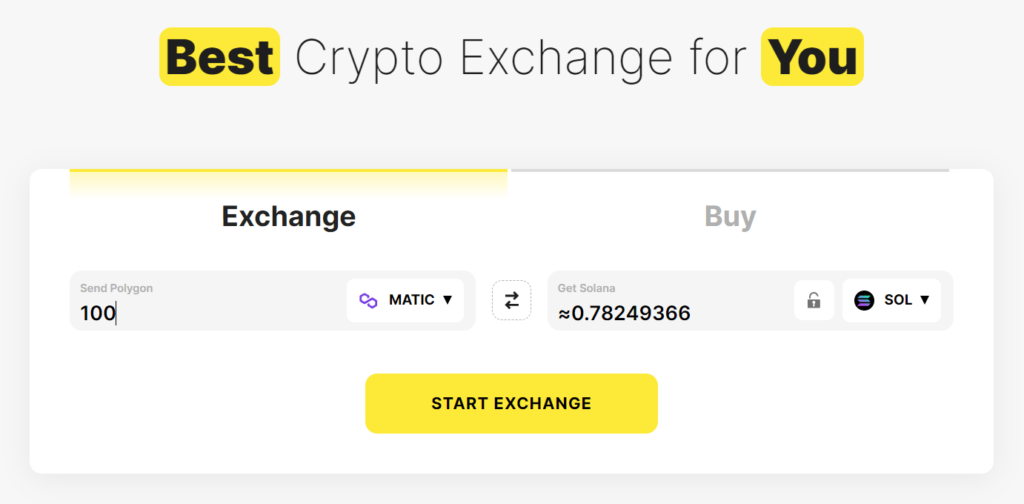
Initiate the Exchange: Look for the “Start Exchange” button and click on it to begin the process.
Enter Your Solana Wallet Address: Provide the Solana wallet address where you wish to receive your SOL tokens.
Confirm and Process the Transaction: Follow the on-screen instructions to confirm and complete your transaction. This might involve verifying transaction details and confirming your transfer.
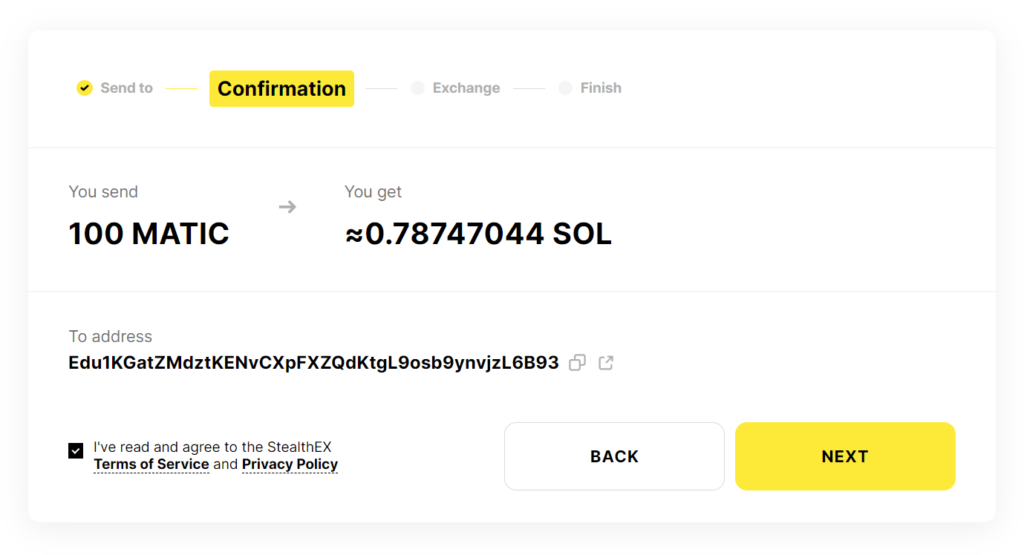
Using StealthEX for your Polygon to Solana exchange comes with several advantages. This platform eliminates the need for registration or extensive verification processes, making it convenient for quick exchanges. The peer-to-peer nature of the exchange enhances privacy and streamlines the process.
StealthEX stands out by facilitating direct cross-chain exchanges. It bypasses the need for external bridges or middlemen, thanks to its network of liquidity providers, including major exchanges. This approach not only simplifies the exchange process but also ensures that users get competitive rates.
Polygon and Solana – Comparison Table
| Feature | Polygon (MATIC) | Solana (SOL) |
| Type | Layer-2 scaling solution for Ethereum | Independent Layer-1 blockchain |
| Scalability | High scalability | Extremely high scalability |
| Consensus Mechanism | Proof of Stake (PoS) | Hybrid Proof of History (PoH) and PoS |
| Consensus Mechanism | Fast, but dependent on Ethereum’s network | Exceptionally fast with low latency |
| Ecosystem | Supports Ethereum-based dApps and tokens | Independent ecosystem with unique projects |
| Smart Contract Support | Yes | Yes |
| Primary Use Case | Enhancing Ethereum scalability, DeFi, NFTs | Enhancing Ethereum scalability, DeFi, NFTs |
| Energy Efficiency | More energy-efficient than Ethereum | Highly energy-efficient |
| Community Support | Large, due to Ethereum compatibility | Growing rapidly, with a focus on speed and efficiency |
FAQ on Polygon and Solana Comparison
Which Is Better: Solana or Polygon?
The choice between Solana (SOL) and Polygon depends on your specific needs. Your preference should align with your project requirements or investment strategy.
Which Crypto Is Better than Solana?
Whether a crypto is better than Solana depends on the criteria: speed, scalability, ecosystem, or specific use cases. Alternatives like Ethereum (ETH) or Cardano (ADA) might be considered based on different needs.
Why Is Polygon Better?
Polygon (MATIC) is considered better for those seeking Ethereum network compatibility. It’s ideal for users and developers focused on Ethereum-based projects.
Is Polygon the Best Crypto?
Declaring Polygon as the best crypto is subjective. It excels in scalability and Ethereum integration but may not suit all use cases. Especially where independent blockchain is needed.
Polygon and Solana: Which Has More Potential?
Both have significant potential in their domains. Polygon has potential in enhancing Ethereum’s capabilities, while Solana shows promise in high-speed, efficient blockchain solutions.
Polygon and Solana: Which Altcoin Is a Better Investment?
Investment suitability varies based on market trends, risk tolerance, and investment goals.
Follow us on Medium, Twitter, Telegram, YouTube, and Publish0x to stay updated about the latest news on StealthEX.io and the rest of the crypto world.
This article is not supposed to provide financial advice. Digital assets are risky. Be sure to do your own research and consult your financial advisor before investing.
exchange crypto Polygon Polygon MATIC SOL SolanaRecent Articles on Cryptocurrency
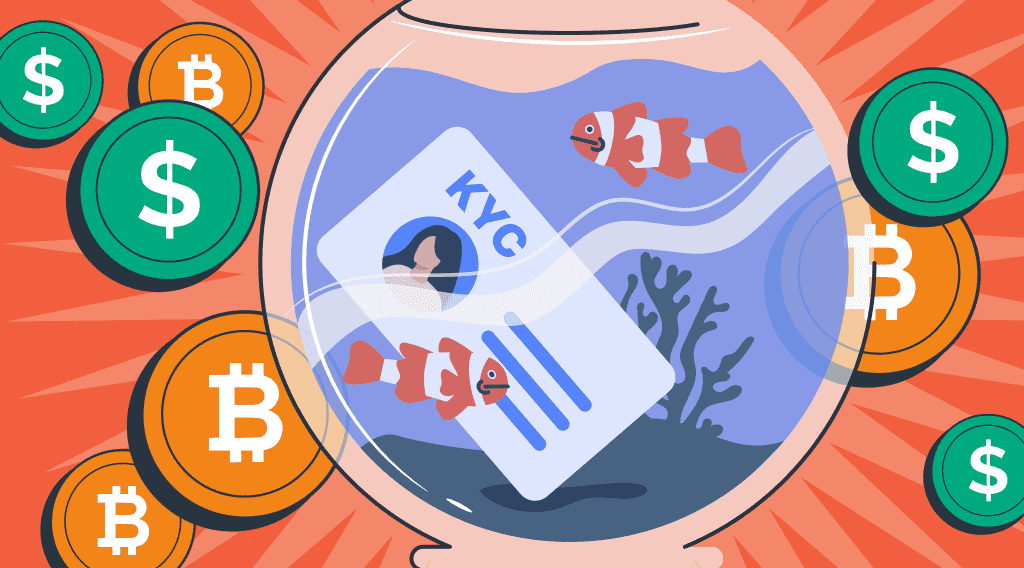 No KYC for Buying Cryptocurrency on StealthEX
No KYC for Buying Cryptocurrency on StealthEX 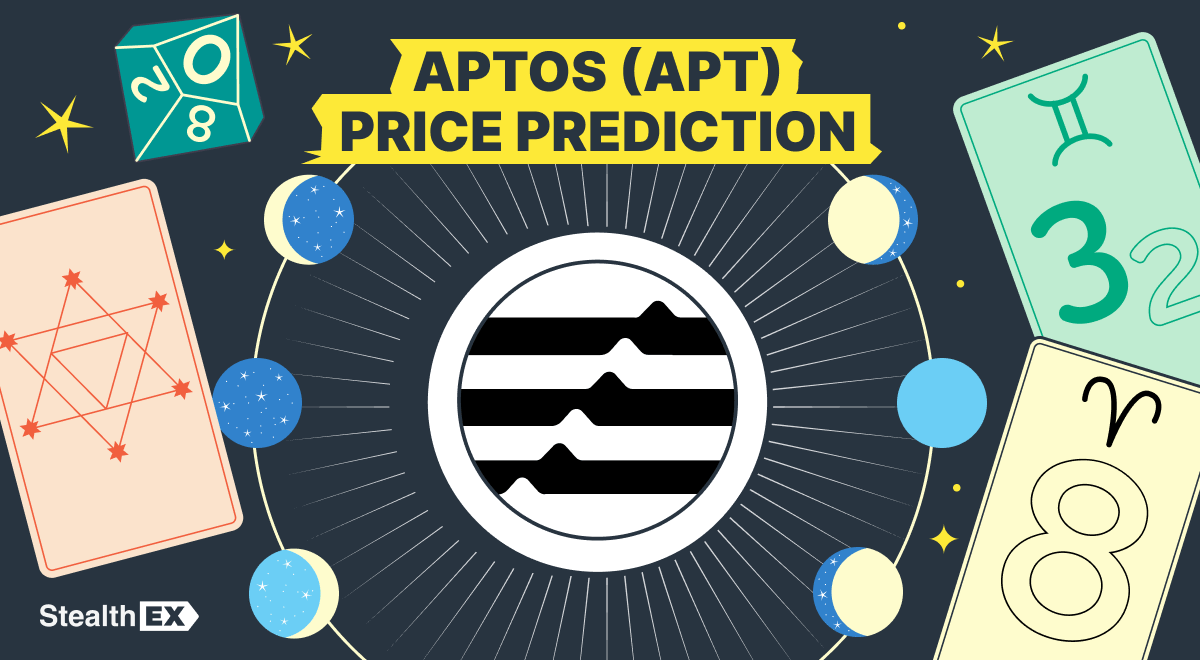 Aptos Price Prediction: Is APT Coin a Good Investment?
Aptos Price Prediction: Is APT Coin a Good Investment? 